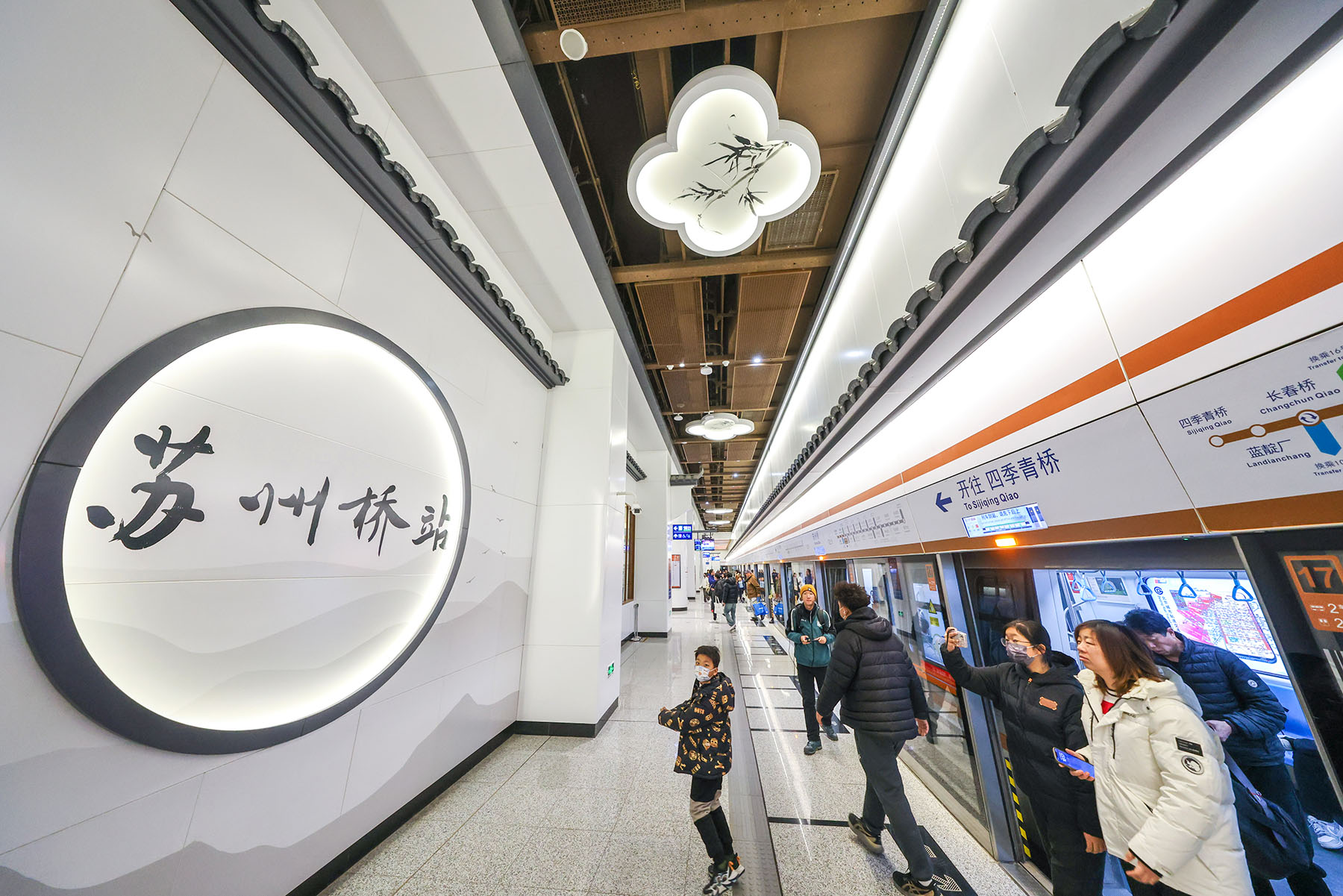
With the opening of three new subway lines on Sunday, Beijing's urban rail transit network has grown to a total length of 879 kilometers, solidifying its status as the longest in China.
"The newly opened subway lines are crucial for easing traffic congestion in the city's central areas and supporting the development of areas along their routes," said Wu Yulan, deputy director of the rail transit operation management bureau at the Beijing Municipal Commission of Transport.
The new additions include the first phase of Line 3, connecting Dongsi Shitiao to Dongbabei; Line 12, linking Sijiqing Qiao to Dongbabei; and the remaining section of the southern extension of the Changping Line.
READ MORE: CRRC unveils breakthrough hydrogen-powered urban train
Together, they contribute approximately 43 km to the city's subway network, according to the commission.
Since the launch of Beijing's first subway line — Line 1 — in 1969, the capital has developed an extensive network with 29 lines and 522 stations. Wu emphasized the subway system's foundational role in supporting the city's development.
"The three new lines not only add new east-west routes in the city center but also connect with several north-south lines, providing enhanced public transportation options for residents in areas such as Madian, Anzhen and Dongba," Wu added.
Dongba, a major residential area, had previously lacked subway access. A resident surnamed Su shared her frustration with traffic congestion and her reliance on a car for commuting.
"Sometimes, it takes 20 to 30 minutes to travel just 1 km during rush hour. With the subway now here — two lines reaching Dongba — it's great news," she said. "I tried out Line 3 over the weekend and am considering using the subway for my daily commute next week."
Notably, the first phase of Line 3, which serves Beijing Chaoyang Railway Station, is expected to enhance passenger flow management at the station. Passengers at Beijing Chaoyang Railway Station now have various transportation options, including subways, buses, taxis and private cars.
With the integration of Beijing Chaoyang Railway Station into the urban rail transit network, all seven of the capital's major railway stations and international airports are now accessible via subway.
Li Tian, station manager of Beijing Chaoyang Railway Station, highlighted efforts to ensure seamless transfers between rail and subway services.
"We coordinated with local government and transit authorities to prepare fully, making passenger travel more convenient," he said.
ALSO READ: Beijing metro enables 'tap-and-go' MasterCard and Visa card payment
A frequent business traveler surnamed Li welcomed the development.
"Whenever I return to Beijing by high-speed train, I prefer taking the subway home. Chaoyang railway station used to lack subway connectivity, and I often had to wait a long time for a taxi at night. The new subway lines will make things much easier," he said.
Beijing's urban rail transit system operates like an underground megacity, with over 11 million passengers using the subway on weekdays. That's equivalent to half the city's population commuting below ground.


